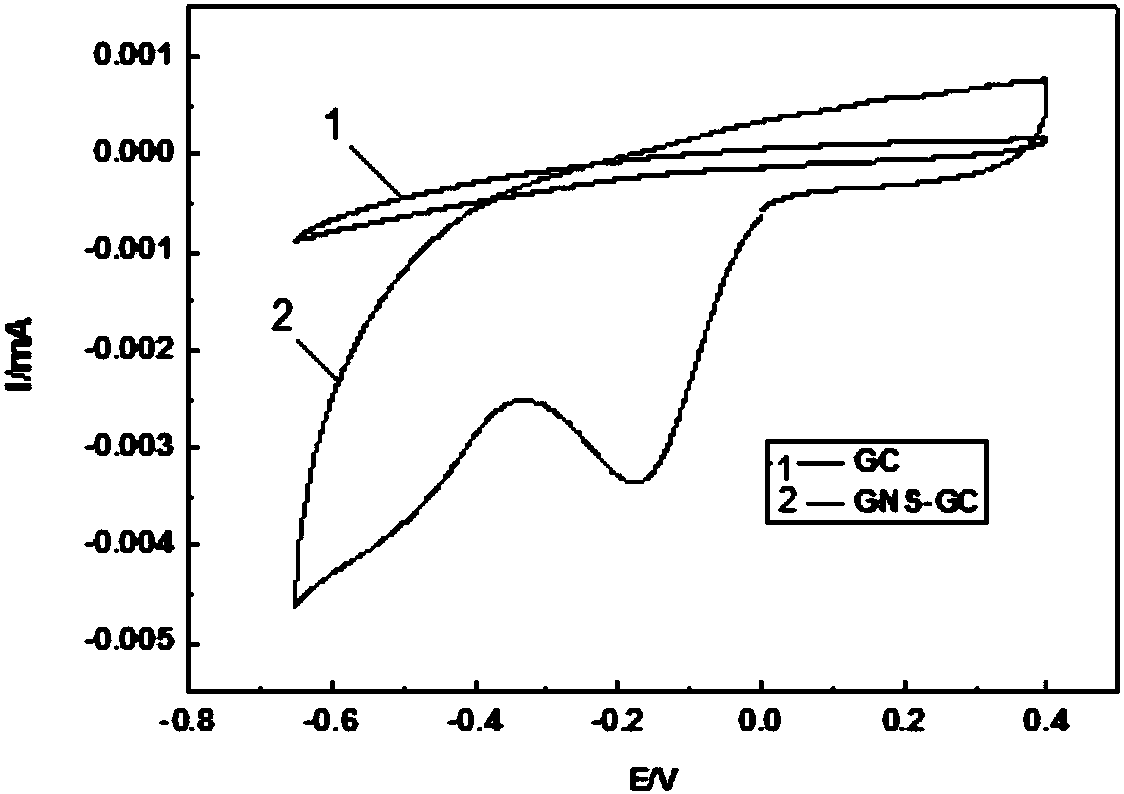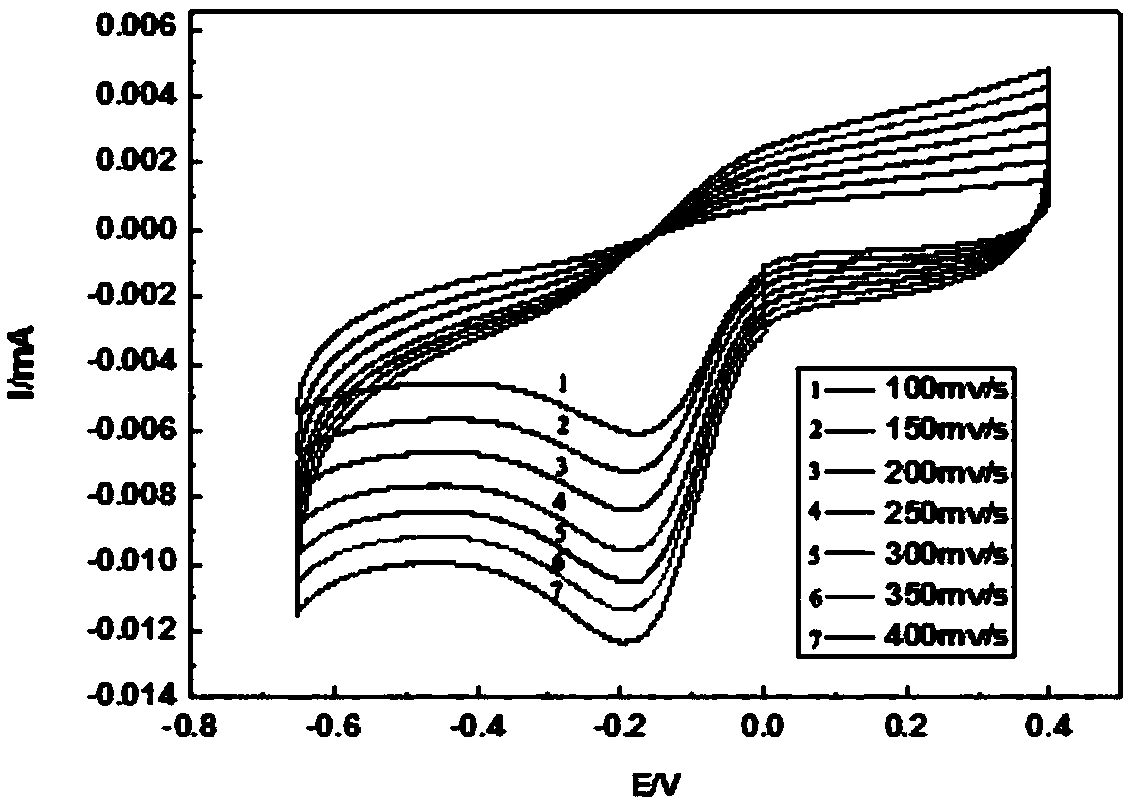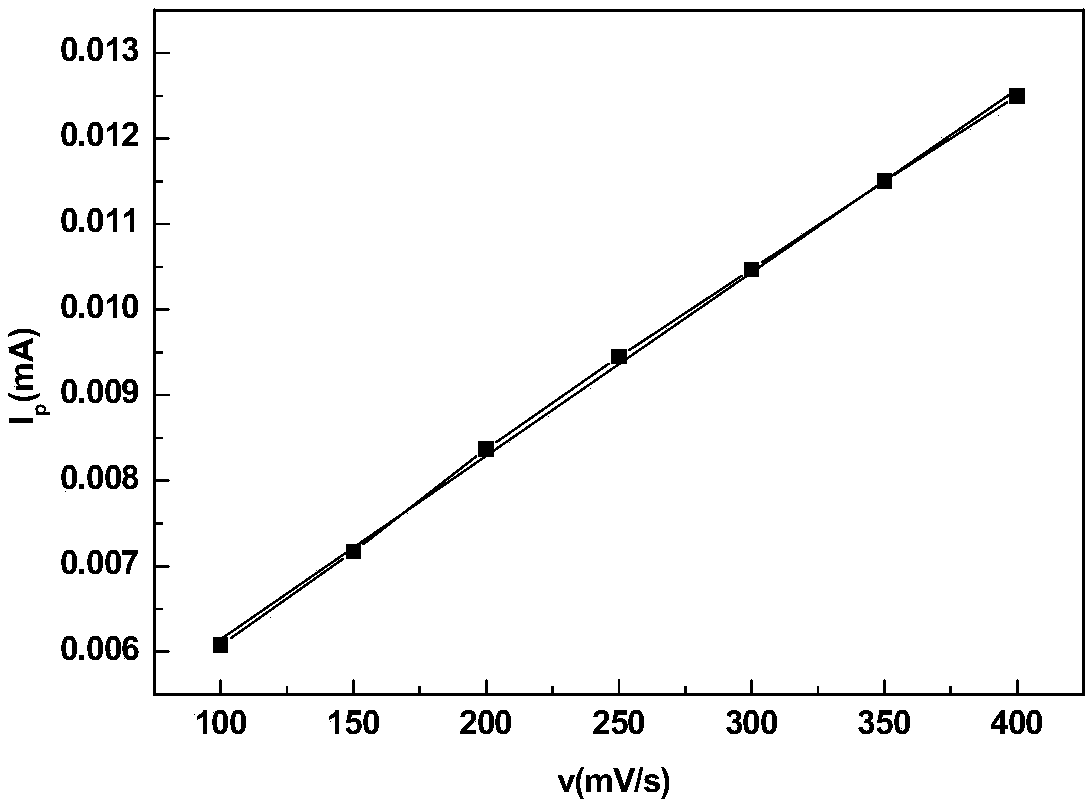Preparation method and application of graphene based hemoglobin sensor electrode
A sensor electrode and hemoglobin technology, applied in the field of biosensors, can solve problems such as low occult blood, achieve easy adsorption, improve the effect of enrichment and direct electrochemical reaction, and achieve the effect of direct detection
- Summary
- Abstract
- Description
- Claims
- Application Information
AI Technical Summary
Problems solved by technology
Method used
Image
Examples
preparation example Construction
[0034] In the specific implementation process, the preparation method of a graphene-based third-generation hemoglobin sensor proposed by the present invention firstly drips a graphene oxide solution onto the cleaned sensor electrode, and electrochemically reduces the graphite oxide. Graphene is converted into graphene for direct electron transfer of hemoglobin and active adsorption and enrichment on the electrode surface. Then, the chitosan solution was drop-coated on the surface of the electrode, and after drying at room temperature, the hemoglobin sensor electrode modified with graphene was obtained. The role of chitosan is to prevent graphene from falling off into the electrolyte and improve the stability of the sensor. The specific steps of this method are as follows:
[0035] (1) Preparation of the third-generation hemoglobin sensor of graphene:
[0036] Pretreatment of glassy carbon electrode: First, the glassy carbon electrode A1 with particle sizes of 1.0 μm, 0.3 μ...
Embodiment 1
[0043] First, a PBS solution with a concentration of 1 mg / ml graphene oxide and a chitosan acetic acid solution with a concentration of 0.2 wt% were prepared respectively. Then, the electrode 1 whose surface has been polished is modified. First, 1 μl of the above graphene oxide solution is dropped on the electrode, and after the electrode is dried at room temperature, 5 μl of 0.2 wt% chitosan solution is added dropwise. After the electrode is dried, the electrode is inserted into a 0.1 mol / L phosphate buffer solution and soaked for 2 hours to remove the graphene oxide that is not firmly bonded to the electrode, and finally a graphene oxide modified electrode is obtained. The above-mentioned modified electrode is used as the working electrode, and a three-electrode system is formed with a saturated calomel electrode (reference electrode) and a platinum sheet electrode (counter electrode), and a phosphate buffer solution of 0.1 mol / L is used as the electrolyte. Electrochemical r...
Embodiment 2
[0045] The preparation method of the graphene-modified electrode is the same as that of Example 1. In order to investigate the electrode reaction process of hemoglobin on the graphene-modified electrode, the modified electrode is used as the working electrode and the silver / silver chloride reference electrode. In the electrode system, 0.06M sulfuric acid containing 2 μg / mL hemoglobin was used as the electrolyte, and the cyclic voltammetry curves were tested at different scanning speeds. The voltage scanning rate is proportional, indicating that the electrode process is controlled by the electron transfer process on the electrode surface, that is, the adsorption process.
PUM
| Property | Measurement | Unit |
|---|---|---|
| diameter | aaaaa | aaaaa |
Abstract
Description
Claims
Application Information
 Login to View More
Login to View More - Generate Ideas
- Intellectual Property
- Life Sciences
- Materials
- Tech Scout
- Unparalleled Data Quality
- Higher Quality Content
- 60% Fewer Hallucinations
Browse by: Latest US Patents, China's latest patents, Technical Efficacy Thesaurus, Application Domain, Technology Topic, Popular Technical Reports.
© 2025 PatSnap. All rights reserved.Legal|Privacy policy|Modern Slavery Act Transparency Statement|Sitemap|About US| Contact US: help@patsnap.com



